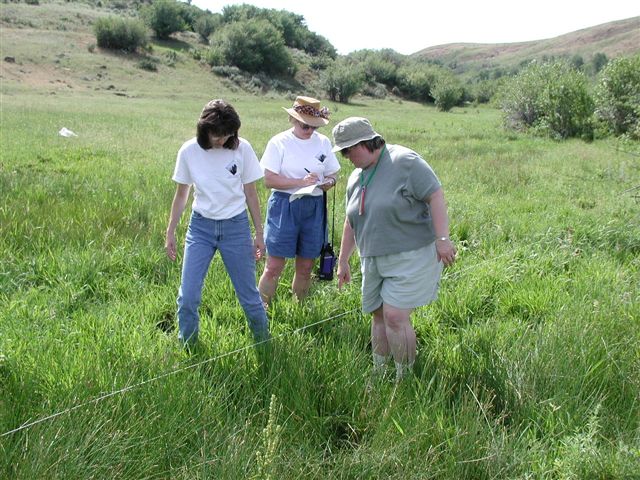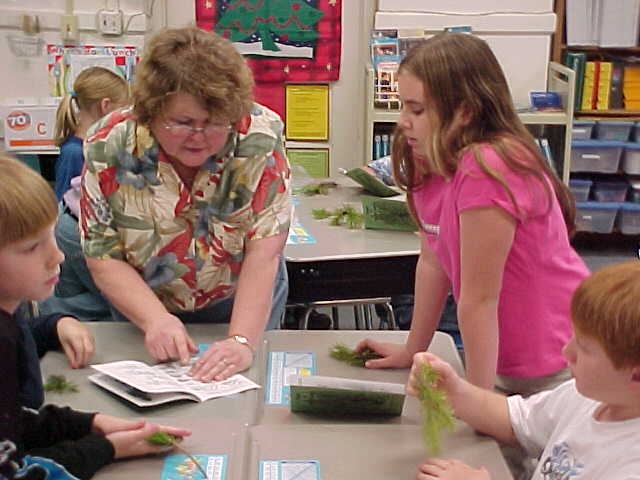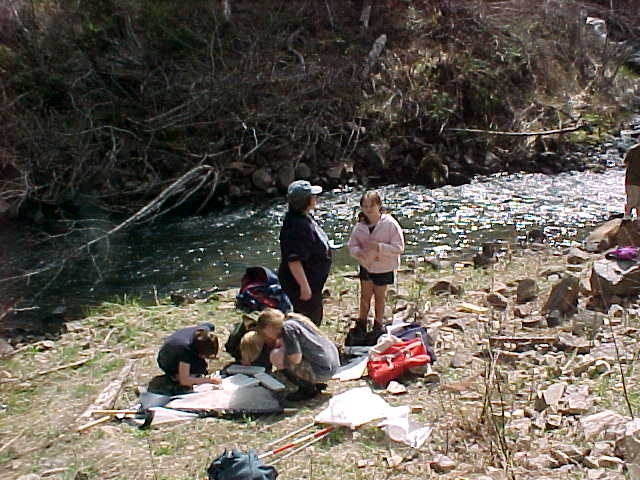 Looking back, I realize that my appreciation for the outdoors, the need to learn about nature, and a yearning to take better care of our environment, stems from the way I was raised. My family spent a lot of time outdoors, and we grew up with respect for the world around us.
Looking back, I realize that my appreciation for the outdoors, the need to learn about nature, and a yearning to take better care of our environment, stems from the way I was raised. My family spent a lot of time outdoors, and we grew up with respect for the world around us.
Even though my family’s home was located in the city, my free time was spent mostly along the Mississippi River in Wisconsin. We climbed bluffs, explored caves, and hiked through valleys near our home. My hunger for knowledge was insatiable; I remember wanting to learn the name of every tree, bird, and flower.
Now, as an adult, my husband and I manage a 270-acre Tree Farm in north Idaho. I still have the desire to identify all the plants and animals we see.
My introduction to PLT
I first became introduced to PLT when I was volunteering as a Girl Scout troop leader. A pair of facilitators led a mini PLT workshop as part of a larger, educational training course. Immediately I was hooked.
The easy-to-follow approach that PLT uses to educate young minds is smart, refreshing, and fun. Several years later, once I became a classroom teacher, I could hardly wait to enroll in a full 15-hour workshop. With more PLT training under my belt, I wanted to share the activities not only with students, but with other educators, as well. I became a trained facilitator and to date have conducted more than 20 PLT workshops.
PLT on the tree farm
Many different school classes, Girl Scout troops, Boy Scout troops, and church groups visit our tree farm.
My husband and I offer them a variety of outdoor experiences. We’ve found that PLT provides a wonderful assortment of activities for such an occasion. As an annual tradition, I take my fourth grade students on a field trip to our forest, where we can explore, study, and nurture the nature that surrounds us.
One year after using various PLT activities, such as “Name that Tree,” “Looking at Leaves,” “Tree Factory,” “Peppermint Beetle,” and “Invasive Species,” my 4th graders gained a better understanding of the different parts of trees and the different species found in our area. They then took part in gathering scientific data for the United States Forest Service about sub alpine and grand firs that were being harmed by the balsam woolly adelgid, an aphid-like insect. (Read more about this by visiting Every Student Learns Outside.)
PLT in the classroom
 Our elementary school participated in “National Environmental Education Week.” Each day had a different theme—earth, sky, water, and energy—and Friday was “Celebrate Earth Day!” A staff committee put together packets of activities for teachers to choose from to use in their classrooms. Each theme (earth, sky, water, and energy) had multiple PLT activities to choose from.
Our elementary school participated in “National Environmental Education Week.” Each day had a different theme—earth, sky, water, and energy—and Friday was “Celebrate Earth Day!” A staff committee put together packets of activities for teachers to choose from to use in their classrooms. Each theme (earth, sky, water, and energy) had multiple PLT activities to choose from.
For our “Celebrate Earth Day,” guest speakers addressed the 3rd, 4th, and 5th grade students. Students rotated through six stations that had different hands-on, educational activities that afternoon. The Tree Station used PLT’s “Tree Cookies” and “We All Need Trees;” the Insect Station had “Invasive Species” and “Trees in Trouble;” and the Garden Station used the background information from “How Plants Grow.”
From sharing with students how to care for flowers and plant seeds, to calculating the age of a tree, the PLT activities used during the week offered students a chance to not only directly experience nature, but also to form life-long relationships with it – all in a learning environment. Our students gained a wealth of knowledge that week, simply because the lessons had an environmental emphasis and the learning was hands-on.
Future plans
 My dream is to continue sharing knowledge about the environment with both young people and adults through a science school or nature center on our tree farm. Such a venue would provide a perfect location for PLT and other professional development workshops.
My dream is to continue sharing knowledge about the environment with both young people and adults through a science school or nature center on our tree farm. Such a venue would provide a perfect location for PLT and other professional development workshops.
I hope to begin with a simple classroom, but eventually expand our facilities to resemble something of a nature camp, where lodging would provide us the opportunity to host overnight workshops and trainings.
In the end, it doesn’t matter whether the group you share PLT with is large or small. What is important is sharing the information available. All PLT activities are well researched and planned. Often we find ourselves using the same activities over and over, but I encourage you to explore the PLT PreK-8 Guide, utilize the appendices and indices to make the most of this invaluable resource.
Branch out and try some new activities. You’ll find they give variety and and excitement to your teaching and your students’ learning.


